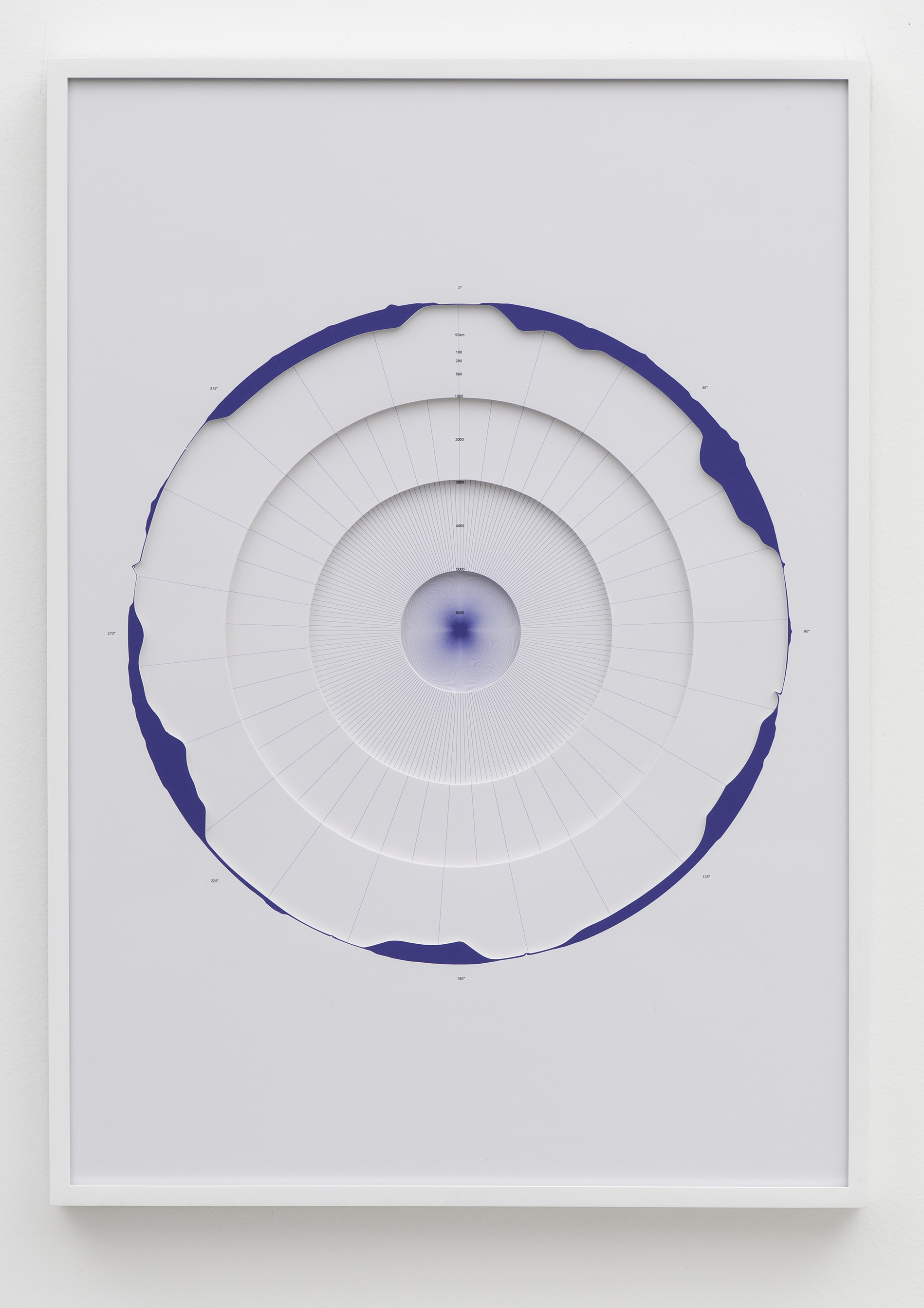Global Cross Section Map
Cut-outs and print on paper
84 x 60 x 70 cm
Research support by RADAR and Loughborouth University.
Project in Collaboration with Clive Cartwright.
This Cross Section represents a generalised overview of themes significant features and discoveries know within the Earth’s crustal layer, revealing a selective range of extreme, significant geological processes, and non-exploitative anthropogenic activities. Where non natural features are identified, careful emphasis has been placed on the positive, explorative aspects, avoiding as much as possible the exploitative economical examples, often cited (for example, oil fields). The overall result should reveal the most positive points of energy found on and within the crustal layer of our planet, in such a way that communicates fluently and effectively.
During my time in Loughborough I have spend a number of days at the British Geological Survey in Keyworth, Nottinghamshire. I was interested in gaining a visual representation of the layers that exist beneath the earth’s surface from core to exosphere.
Here some questions that I posed and Clive Cartwright has answered below.
What are the distinguishing features of a “cross section”map in relation to other kinds of map?
Generally, mapas tend to reveal spatial features either perpendicular to the planet’s surface or at an angle (off nadir). A “cross section”is quite different, in so far as the features illustrated below surface level are visualised in the method of a generalised profile. The overall effect is quite similar to a side view of a slice of cake, or more a slice “Scotch egg”.
Are cross section maps common in cartography?
Not really, Crosse sections are only necessary if the them of the map is based on data below the surface are, i.ed, Geological maps, Archeological Sections, etc….
With the map you have worked on with me, could you explain what it shows us about the energy beneath the earth’s surface as well as the topography of the highest and deepest points of the crust.
This section map is highly subjective. There appears to be a primal fascination to subjects such as mountains, volcanoes, gold, silver, etc…and communicating these themes in a clear colourful manner hopefully helps the observer engage with your map to full effect.
How much do we know about the inner planet? How much of it is known to geologist?
As geology is not my field, it is difficult to give justification to this question, however, from what I’m aware, very little is know about the planet below the Earth’s crust. The deepest solid know examples are reliably identified through surface outcrops where the earths’s surface has pushed up old oceans beds (ophiolite) containing material from our upper mantle. It’s this rock that provides the geologist a special insight into the rock composition of the Earth at such depths. Examples can be found at The Troodos Mountains, Cyprus. Remote sensing tools also help to identify densities below the Earths’s surface, such as seismic recording, revealing varying wave transmission properties through the whole body of the Earth. The study of asteroids (material debris from space) help add to our knowledge, providing potential insight into the inner Earths’chemical composition, to some degree, albeit from another source.

